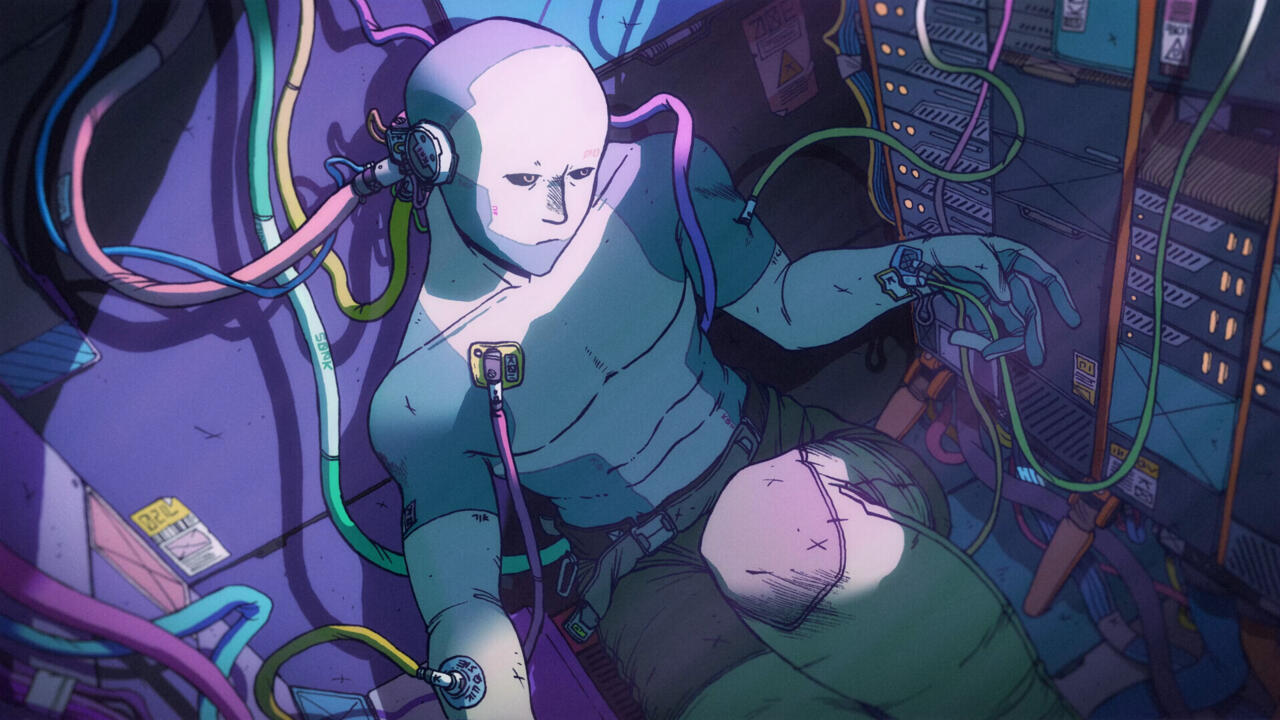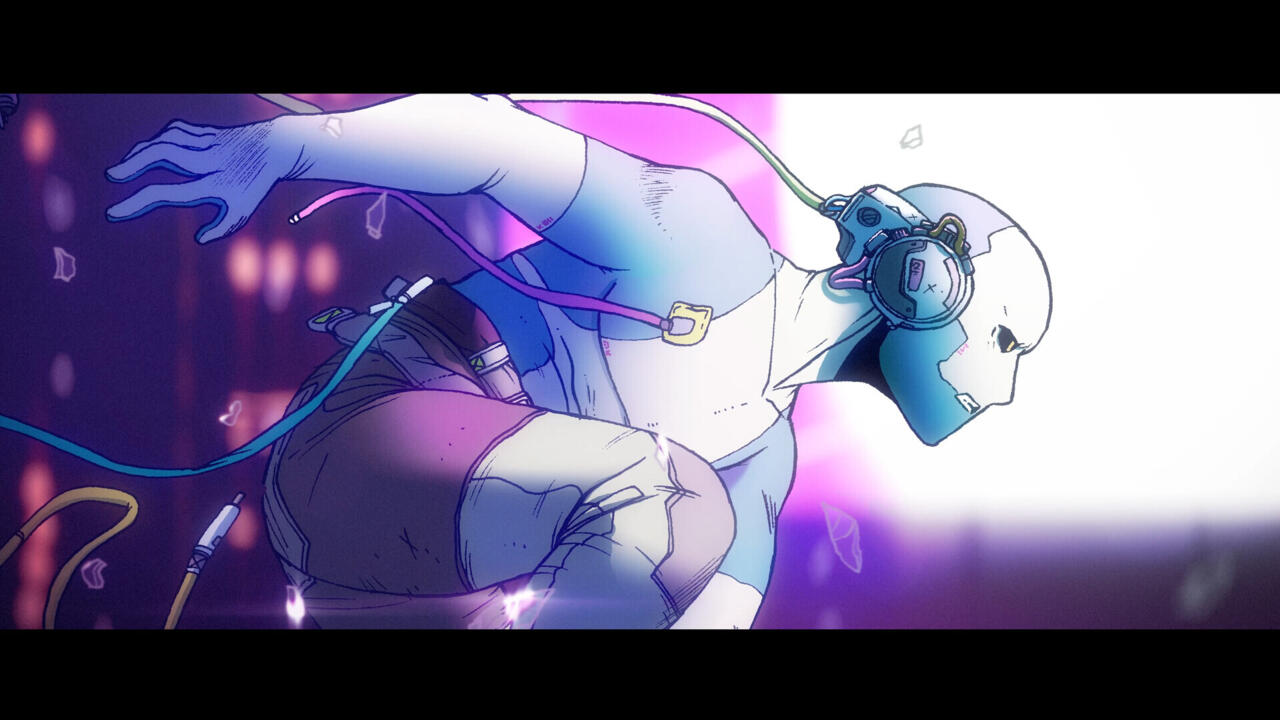The original Citizen Sleeper came out at the perfect time for me. The 2022 role-playing video game was released just as my role as the “forever GM” among my friend group was solidifying, leaving me eager for tabletop-inspired gaming experiences where I could be a player. Utilizing an action economy based around rolling dice to deliver an agency-rich roleplaying experience, Citizen Sleeper scratched that itch I was looking for. A year later, developer Jump Over The Age has announced that Citizen Sleeper 2: Starward Vector is already in development. As you can probably surmise, I’m ecstatic.
Like its predecessor, Citizen Sleeper 2 sees you play as a robotic individual known as a Sleeper. The game begins with you partially rewriting your programming, stopping your need to depend on the stabilizing agent that Sleepers need to regularly inject themselves with in order to survive. However, the process is interrupted, causing you to experience memory loss and suffer multiple malfunctions in your body. As your health continues to decline, you team up with a friend you no longer have any memory of and take off on a ship, jumping from location to location in order to stay one step ahead of the gang leader hunting you down.
Jump Over the Age is a one-person game development studio founded by Gareth Damian Martin–I sat down with them to talk about creating Citizen Sleeper 2 so soon after the release of the first game, and how this sequel will expand upon the already solid tabletop-inspired gameplay loop. Following the interview, I asked Martin about Steam Deck support and they said they’re “definitely” making the game with Steam Deck in mind and that “later on, we’ll definitely be announcing more platforms.” For now, Citizen Sleeper 2: Starward Vector is only confirmed for PC.
Based on the announcement trailer, Citizen Sleeper 2 has a far more explosive and dramatic start in comparison to its predecessor. Is the trailer a good indication for the entire storyline and narrative pacing of Citizen Sleeper 2?
I think the game will still very much be about spending time with characters, but when you’re introducing a world for the first time to people, I think you want to introduce it. You can’t have too many threads going on at once. In a certain sense, what I want is to put people in this situation and let them feel their way through it. But now people know vaguely what a Sleeper is, and even if they haven’t played the first game, I think it’s easier to get people up to speed. I wanted to have more of an impulsive kind of beginning and also be able to tell stories where it felt you are more on the run in Citizen Sleeper 2, at the beginning of the game especially.
As the game goes on, that then can change into being a structure where you’re freer to explore, but that depends on what you do. Part of that is also me thinking about how players go through the game because, in Citizen Sleeper 1, I ended up–slightly by accident–having a fastest route through the game, which a lot of players take. It takes maybe four or five hours and they have a really nice contained experience. Only some players take that route and then stop or go explore other ones, or take that route and then go back and play other endings–those other routes’ endings are a bit longer. I’m trying to design that more intentionally this time around.
How does the transient nature of this Sleeper’s life affect the narrative pacing and gameplay loop of the game? Cause now it sounds like we’re regularly moving around, meeting new people more often.
It affects the pacing quite a lot, and that’s because, in a way, I didn’t want to just make another Citizen Sleeper. Citizen Sleeper 2 is a sequel, but it’s also a companion game in the sense that it’s trying to explore a different kind of structure, while still using everything I learned from making the first game, just trying to use the systems in different ways. I love urban narratives about characters, how they’re meshed [together] in a city and there’s all these different lives that pass them by. But I felt like I’d really explored that in Citizen Sleeper 1, so I was like, “I don’t want to do this again.” Another kind of story I love is the kind [found in] Firefly, Cowboy Bebop: a ragtag group of people on a ship, especially ones where people are not necessarily all each other’s best friends and there’s tension between them.
I feel it’s a story that I don’t think games often get right. I think there are a lot of space games, but there are very few games that actually really get the human side of those kinds of stories. Because of the way Citizen Sleeper works–it’s very human, it’s very focused on those small interactions–it felt like with Citizen Sleeper 2, I’d had an opportunity to make a good one of those. It’s something that I’ve always wanted to play myself. That’s always a good starting point for making a video game is making a game that you would like to exist. This time around that was my big focus. That’s the atmosphere I’m looking for.
[In Citizen Sleeper 2] it’s much more about traveling from place to place and getting into trouble in places. You’re getting involved because you have to. Let’s say you arrive at a place and in order to travel to the next place–or anywhere from this place if all other places are out of the range of your ship’s engines–then you might need to go and get ahold of a part that you need for your ship’s engines in order to do that. But how you get that part is up to you. Maybe when you find it, you steal it from the place, but that might get you into trouble. Or maybe the person who’s offering it to you might offer you a contract [for the engine]. Contracts are a new thing we have in the game–you can take on contracts and you go out and do a series of dissections and you get variable rewards depending on how well you’re doing.
That’s also where you make use of your crew as well. You take a crew on contracts with you. This person might be like, “Oh, if you want this part, well I’ll trade it for you, but you’ve got to go to this derelict spaceship and get this thing I want from there. Also, you’ve got to take this person with you.” So then you’ll take that person with you and then maybe when you take that person with you, that person might turn out to be a bit of a problem for you. Like a classic [Dungeon Master] or [Game Master], I am always trying to think of ways to get my players into trouble. That’s the pacing of Citizen Sleeper 2. It’s very much “We’re on the run trying to get away, but at the same time, in order to keep going, in order to keep the ship running and keep everybody happy, there’s always going to be complications.” Or maybe you find a character and you’re like, “I really like that character. I’m going to forget my problems. I’m going to make sure I solve their problems.”
[Travel] is not like FTL where it’s like hop, hop, hop, hop along the map. Travel is expensive and it takes work, it takes money, and you’ve got to keep your ship together. Every time you travel, that’ll be something you build up to, you get everything together and then you’re like, “Okay, now we can leave. We can go to the next place.” Then when you get to that next place, you’ll have to do something else. Maybe you’ll have to get enough fuel to keep going. You’ll start looking around and be like, “What jobs can I pick up? What can I get involved in?” Maybe some of the people on your ship might get into trouble themselves and you have to bail them out if you want to use them. So yeah, it’s a balance.

Can you ultimately become stranded somewhere or is there always a way out?
I think you technically could get stuck somewhere for an extended period of time. Generally, again, I try to take that kind of DM’s attitude of, “I want to keep the player playing.” Failing is good, it’s fine, and I want to support failure with interesting outcomes. One of the things I’m playing with this time around–which I haven’t locked down yet–is how I’m going to use difficulty. I would like to think about ways of adding difficulty levels to the game, but it can be quite difficult with a narrative game. There are things like permadeath, which are, again, potential ideas that could go in there, but I would only ever want to put these things in if I felt like they gave a meaningful twist on the experience.
It’s always tricky, but my general preference is that I want to keep players on their feet. That’s one of the good things about being on the run. Because being on the run, you can’t ever get stuck somewhere for too long because they’re going to catch up with you and when they catch up with you, well something’s going to happen. The likelihood of a player getting stuck without something happening is quite low. That’s part of why I chose that structure because it allows me to keep the story moving even if the player doesn’t keep moving.
Circling back around to your comments on managing and ship and leading a crew, it sounds like, in this sequel, you’re not just navigating your own personal crisis, but that of an entire group of people?
Your crew does have their own utility in the game–your crew mates have stats, for example. But we’re not really going into depth on how exactly you use crew right now. It will be a benefit to have a good crew member but [Citizen Sleeper 2] is not a management game. It’s not about assigning slots and equipping. You’re not going to be equipping your crew with items or loads or anything like that. But the crew do have uses in the contracts and that’s fun for me because it allows me to play mechanical games. Let’s say there’s a character who’s totally useless with really poor stats, but narratively, they really need you to take them on a contract with them. Or maybe they just need to get a job because they need to get off the ground; they need some experience and no one will hire them unless they get some experience.
The question for you as a player is which contract do you care the least about that you [would] be willing to take that kind of a character with you? I like to have a bit of mechanics and a bit of narrative so that I can make those things create stories together. So with a crew, it’s not a crew management game, but it’s very much crew management as a domestic and narrative structure. What if your best crew member is also wanted by somebody and you know that one day someone is going to come trying to get somebody to pay and it might be you? Do you keep using that crew member? Maybe they’re really good and you’re like, “Well, it’s going to be trouble, but just right now we need this. We need you right now. And then we’ll deal with the trouble later.” There’s a lot of kicking the can down the road and those are all the things I’m trying to have fun with and design into the game and find ways to fit those in, so we will see how those things play out in the game.

How does the crew building work? How involved is the process of bringing new characters into your ship? Is it like Mass Effect?
It’s not like Mass Effect, I love Mass Effect, but I always felt a little bit weird about the way you go around the galaxy, scoop everybody up and then make them live on your ship, especially for the characters that you never use. There were multiple people in Mass Effect that I was just like, “I’ve just taken you out of your life and made you live on my ship, but I really have no interest in having any kind of relationship with you or using you at all.” [Citizen Sleeper 2] is much more varied than that. There’s a distinction between crew and passengers and people at a location. When you go on a contract, that’s when you pick what crew comes with you. Those crew might be people that are on your ship, they might be people who are in the local area who are available to you for various reasons, and those temporary crew members might become full-time crew, they might join your ship for a little while because that’s convenient for them.
It’s going to be a network of things, depending on what route you take through the game, depending on what places you visit and in what order. That’s going to affect what crew you carry through and where you take them. No one will really be a permanent installation on your crew as such–you might end up with a few people living on the ship–but you can only ever take two people on a contract with you. You can also choose, unlike Mass Effect, to not take anybody. You can go on a contract on your own depending on the contract. In the example I gave earlier where somebody’s like, “Hey, do this contract and take this person with you,” you can just not take that person with you and there will be narrative effects based on the fact that you just left them at the dock. I want to make sure that all the decisions in the game, all the mechanics, are part of the narrative. Nothing is just purely mechanical. It always will have a narrative effect. I’m trying to support those decisions as much as possible, the design of the game.

Based on all of this, how does the core gameplay loop of the original Citizen Sleeper evolve in this sequel, especially the dice rolling? Can fans expect a familiar set-up or have the tabletop mechanics evolved and changed as well?
The game will look and play like a Citizen Sleeper game. I’m not changing the way the game works. You will go to locations on the little nodes and you will use your dice to do actions and fill blocks. The dice system will look different. On Steam, there’s actually a little picture of the new dice system and it’s completely unlabeled so people can just guess what the weird little new red circles and things mean. That’s part of the overall structure of malfunctions and how your body works, so that’s different. Then also because there’s more focus on the ship, the ship–rather than being a single location and one node that you click on–is a place with multiple locations like the bunks and the engine and things like this. That’s also something that’s going to feel a little different because obviously in Citizen Sleeper 1, a house was just one place. There’s only so much stuff you could fit in that.
I needed to expand that a bit more to allow more space. Then with changes to the drive system and the skills progression, there’s lots of stuff being added on top so the focus is slightly shifted more towards the ship gameplay. That affects the kind of things that happen, but in terms of the core [gameplay loop], I’m keeping that.
It’s actually a really good opportunity to be able to be like, “Well, what else can we do with this system?” Because the dice system for Citizen Sleeper is not necessarily weathered to everything that’s in that game. There are lots of other ways that you can use that and it’s super flexible. That’s what’s amazing about it. That’s what’s been really exciting–when I’m thinking about stories, the kind of stories I’m telling you in this interview, to make those in the usual third-person AAA game, it would take a huge amount of effort because it requires so many cutscenes and characters and mechanics. But in my case, if I want to say, “I want to represent something,” I’m always just using dice. I’m always just using clocks. I can always make do with those. And that means I can tell way more ambitious stories than most video games and I can actually have these things happen that seem quite surprising and different because I’m using a core system, just like in any tabletop game. It’s like you’re using the same dice system over and over again for every single interaction in a tabletop game. That’s actually the strength because you can tell almost any story with that. That’s why I’m making a sequel–Citizen Sleeper 1 was great, but I look at it and I’m like, “There are so many ways I can build on this. There are so many ideas in the tabletop scene that I can look at bringing in.” It just felt like a beginning rather than a finished thing to me.
The products discussed here were independently chosen by our editors.
GameSpot may get a share of the revenue if you buy anything featured on our site.























